
Self (archive footage)
The panorama of human affairs encounters the “man with a movie camera”. His playground has no boundaries, his curiosity no limits. Characters, situations and places pitch camp in the life of a humanity that is at once the viewer and the thing viewed. But what are the last days of this humanity? Have they already passed? Are they now or still to come?

Video registration of Carmelo Bene's play 'Lorenzaccio, al di là di de Musset e Benedetto Varchi', performed in Florence in 1986.

Director
Video registration of Carmelo Bene's play 'Lorenzaccio, al di là di de Musset e Benedetto Varchi', performed in Florence in 1986.

Directed by Carmelo Bene

Director
Directed by Carmelo Bene

Director
When we believe it is we who say we are said. In the speech, the strong-willed arrogance of all my intentions is hopelessly frustrated and since we are not the learners to argue in voice what whips in our mind, just as you are not, you can say nothing.

Self
A visit to the Rotoli cemetery in Palermo, while film director Carmelo Bene reads a fragment of Antonio Pizzuto's book "Signorina Rosina".

Writer

Costume Design

Makeup Designer

Art Direction

Producer

Pinocchio / Geppetto / Mastro Ciliegia / Grillo Parlante / Mangiafuoco / Volpe / Lucignolo

Director

Director
On the occasion of the bicentenary of the birth, Carmelo Bene returns to the verses of the poet from Recanati. In this film the most beautiful poems by Giacomo Leopardi (La Ginestra, Il Canto Notturno, Le Ricordanze, A Silvia, L'Infinito ...), but also some passages from the Moral Operettas, as well as the unfinished Project for a hymn at Ahrimane, follow one another with deep and moving simplicity, with a quiet immediacy that causes the void of every other voice: therefore the listenere is ensnared in the pauses, bewitched by the unexpected descents of silence. The voice assumes a dark and ancestral tone in which the words seem to find their original nuances.

On the occasion of the bicentenary of the birth, Carmelo Bene returns to the verses of the poet from Recanati. In this film the most beautiful poems by Giacomo Leopardi (La Ginestra, Il Canto Notturno, Le Ricordanze, A Silvia, L'Infinito ...), but also some passages from the Moral Operettas, as well as the unfinished Project for a hymn at Ahrimane, follow one another with deep and moving simplicity, with a quiet immediacy that causes the void of every other voice: therefore the listenere is ensnared in the pauses, bewitched by the unexpected descents of silence. The voice assumes a dark and ancestral tone in which the words seem to find their original nuances.

Writer
Macbeth, the Thane of Glamis, receives a prophecy from a trio of witches that one day he will become King of Scotland. Consumed by ambition and spurred to action by his wife, Macbeth murders his king and takes the throne for himself.

Director
Macbeth, the Thane of Glamis, receives a prophecy from a trio of witches that one day he will become King of Scotland. Consumed by ambition and spurred to action by his wife, Macbeth murders his king and takes the throne for himself.

Macbeth, the Thane of Glamis, receives a prophecy from a trio of witches that one day he will become King of Scotland. Consumed by ambition and spurred to action by his wife, Macbeth murders his king and takes the throne for himself.

Costume Design
One of the last TV performances by Carmelo Bene, from Publio Papinio Stazio and Henrich Von Kleist, mixing the myth of the amazon Pentesilea with the invulnerability of the greek hero Achilles. Bene performs alone in a stage filled with mannequins, acting in playback.

Art Direction
One of the last TV performances by Carmelo Bene, from Publio Papinio Stazio and Henrich Von Kleist, mixing the myth of the amazon Pentesilea with the invulnerability of the greek hero Achilles. Bene performs alone in a stage filled with mannequins, acting in playback.

Adaptation
One of the last TV performances by Carmelo Bene, from Publio Papinio Stazio and Henrich Von Kleist, mixing the myth of the amazon Pentesilea with the invulnerability of the greek hero Achilles. Bene performs alone in a stage filled with mannequins, acting in playback.

Director
One of the last TV performances by Carmelo Bene, from Publio Papinio Stazio and Henrich Von Kleist, mixing the myth of the amazon Pentesilea with the invulnerability of the greek hero Achilles. Bene performs alone in a stage filled with mannequins, acting in playback.

One of the last TV performances by Carmelo Bene, from Publio Papinio Stazio and Henrich Von Kleist, mixing the myth of the amazon Pentesilea with the invulnerability of the greek hero Achilles. Bene performs alone in a stage filled with mannequins, acting in playback.

Himself

Director

Director
Rome, December 12th - 15th 1990.

Himself
Rome, December 12th - 15th 1990.

Producer
A TV movie variation on Shakespeare's Hamlet. The movie is a part of Carmelo Bene's multi-medial project on Hamlet, also including the theatrical movie "Un Amleto di meno", a stage drama and the experimental video "Amleto di Carmelo Bene (Da Shakespeare a Laforgue).

Writer
A TV movie variation on Shakespeare's Hamlet. The movie is a part of Carmelo Bene's multi-medial project on Hamlet, also including the theatrical movie "Un Amleto di meno", a stage drama and the experimental video "Amleto di Carmelo Bene (Da Shakespeare a Laforgue).

Director
A TV movie variation on Shakespeare's Hamlet. The movie is a part of Carmelo Bene's multi-medial project on Hamlet, also including the theatrical movie "Un Amleto di meno", a stage drama and the experimental video "Amleto di Carmelo Bene (Da Shakespeare a Laforgue).

Amleto
A TV movie variation on Shakespeare's Hamlet. The movie is a part of Carmelo Bene's multi-medial project on Hamlet, also including the theatrical movie "Un Amleto di meno", a stage drama and the experimental video "Amleto di Carmelo Bene (Da Shakespeare a Laforgue).

Director

Writer
Drama by Lord George Byron, music by Robert Schumann. Filmed at Teatro Comunale di Bologna, 1979.

Director
Drama by Lord George Byron, music by Robert Schumann. Filmed at Teatro Comunale di Bologna, 1979.

Drama by Lord George Byron, music by Robert Schumann. Filmed at Teatro Comunale di Bologna, 1979.

Director
Carmelo Bene reads poems by Dino Campana

Carmelo Bene reads poems by Dino Campana

Riccardo III
Riccardo III (da Shakespeare) secondo Carmelo Bene

Adaptation
Riccardo III (da Shakespeare) secondo Carmelo Bene

Director
Riccardo III (da Shakespeare) secondo Carmelo Bene

Realized in 1980 for Rai 2, it recalls the main phases in the life of Giorgio Colli.

Costume Design
An experimental video variation on Shakespeare's Hamlet.

Art Direction
An experimental video variation on Shakespeare's Hamlet.

Producer
An experimental video variation on Shakespeare's Hamlet.

Amleto
An experimental video variation on Shakespeare's Hamlet.

Director
An experimental video variation on Shakespeare's Hamlet.

Screenplay
An experimental video variation on Shakespeare's Hamlet.

Adaptation
Performance shot in 1977, in which emblematic actor Carmelo Bene, in the charming reconstruction of the ruins of a theater on fire accompanied by the disturbing notes of Vittorio Gelmetti, reads four poems of the Twentieth Century russian poets Vladimir Majakovskij, Boris Pasternak, Aleksandr Blok and Sergej Esènin.

Director
Performance shot in 1977, in which emblematic actor Carmelo Bene, in the charming reconstruction of the ruins of a theater on fire accompanied by the disturbing notes of Vittorio Gelmetti, reads four poems of the Twentieth Century russian poets Vladimir Majakovskij, Boris Pasternak, Aleksandr Blok and Sergej Esènin.

Performance shot in 1977, in which emblematic actor Carmelo Bene, in the charming reconstruction of the ruins of a theater on fire accompanied by the disturbing notes of Vittorio Gelmetti, reads four poems of the Twentieth Century russian poets Vladimir Majakovskij, Boris Pasternak, Aleksandr Blok and Sergej Esènin.
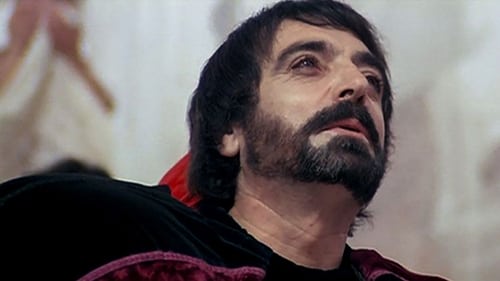
Music Coordinator
The "Hamlet" in this well-mounted Italian spoof is the Danish prince, not a small town or village. The movie irreverently draws on both the Shakespeare play and the 1877 story by Jules Laforgue. In the story, Hamlet (Carmelo Bene) is a would-be playwright. He suffers from inept Freudian analysis by Polonius (Pippo Tuminelli), and Ophelia and Gertrude (Isabella Russo & Luciana Cante) are women conjured up in his erotic imagination.

Costume Design
The "Hamlet" in this well-mounted Italian spoof is the Danish prince, not a small town or village. The movie irreverently draws on both the Shakespeare play and the 1877 story by Jules Laforgue. In the story, Hamlet (Carmelo Bene) is a would-be playwright. He suffers from inept Freudian analysis by Polonius (Pippo Tuminelli), and Ophelia and Gertrude (Isabella Russo & Luciana Cante) are women conjured up in his erotic imagination.

Art Direction
The "Hamlet" in this well-mounted Italian spoof is the Danish prince, not a small town or village. The movie irreverently draws on both the Shakespeare play and the 1877 story by Jules Laforgue. In the story, Hamlet (Carmelo Bene) is a would-be playwright. He suffers from inept Freudian analysis by Polonius (Pippo Tuminelli), and Ophelia and Gertrude (Isabella Russo & Luciana Cante) are women conjured up in his erotic imagination.

Hamlet
The "Hamlet" in this well-mounted Italian spoof is the Danish prince, not a small town or village. The movie irreverently draws on both the Shakespeare play and the 1877 story by Jules Laforgue. In the story, Hamlet (Carmelo Bene) is a would-be playwright. He suffers from inept Freudian analysis by Polonius (Pippo Tuminelli), and Ophelia and Gertrude (Isabella Russo & Luciana Cante) are women conjured up in his erotic imagination.

Writer
The "Hamlet" in this well-mounted Italian spoof is the Danish prince, not a small town or village. The movie irreverently draws on both the Shakespeare play and the 1877 story by Jules Laforgue. In the story, Hamlet (Carmelo Bene) is a would-be playwright. He suffers from inept Freudian analysis by Polonius (Pippo Tuminelli), and Ophelia and Gertrude (Isabella Russo & Luciana Cante) are women conjured up in his erotic imagination.

Director
The "Hamlet" in this well-mounted Italian spoof is the Danish prince, not a small town or village. The movie irreverently draws on both the Shakespeare play and the 1877 story by Jules Laforgue. In the story, Hamlet (Carmelo Bene) is a would-be playwright. He suffers from inept Freudian analysis by Polonius (Pippo Tuminelli), and Ophelia and Gertrude (Isabella Russo & Luciana Cante) are women conjured up in his erotic imagination.

Adaptation
Adapted from the ninth chapter of the novel "Controcorrente" (1884) by Joris Karl Huysmans. Its narrative concentrates almost entirely on its principal character and is mostly a catalogue of the tastes and inner life of Jean des Esseintes, an eccentric, reclusive aesthete and antihero who loathes 19th-century bourgeois society and tries to retreat into an ideal artistic world of his own creation.

Director
Adapted from the ninth chapter of the novel "Controcorrente" (1884) by Joris Karl Huysmans. Its narrative concentrates almost entirely on its principal character and is mostly a catalogue of the tastes and inner life of Jean des Esseintes, an eccentric, reclusive aesthete and antihero who loathes 19th-century bourgeois society and tries to retreat into an ideal artistic world of his own creation.

Jean des Esseintes
Adapted from the ninth chapter of the novel "Controcorrente" (1884) by Joris Karl Huysmans. Its narrative concentrates almost entirely on its principal character and is mostly a catalogue of the tastes and inner life of Jean des Esseintes, an eccentric, reclusive aesthete and antihero who loathes 19th-century bourgeois society and tries to retreat into an ideal artistic world of his own creation.
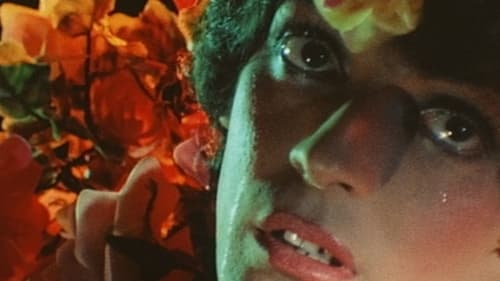
Erode Antipa / Onorio
Salome is the daughter of the second wife of King Herod. The King is infatuated with her and, after she fails to seduce the prophet John The Baptist, she dances for the King in order to ask for his execution.

Producer
Salome is the daughter of the second wife of King Herod. The King is infatuated with her and, after she fails to seduce the prophet John The Baptist, she dances for the King in order to ask for his execution.

Writer
Salome is the daughter of the second wife of King Herod. The King is infatuated with her and, after she fails to seduce the prophet John The Baptist, she dances for the King in order to ask for his execution.

Director
Salome is the daughter of the second wife of King Herod. The King is infatuated with her and, after she fails to seduce the prophet John The Baptist, she dances for the King in order to ask for his execution.

Pannocchia
A few days after the arrival of the year 1000, bearer of great misfortune according to the Prophets, the cavalryman Fortunato and two soldiers, Pannocchia and Carestia, travel through Italy in the midst of numerous adventures: The prophetic year is marked only by the discovery on the part of the cavalryman of his wife's betrayal
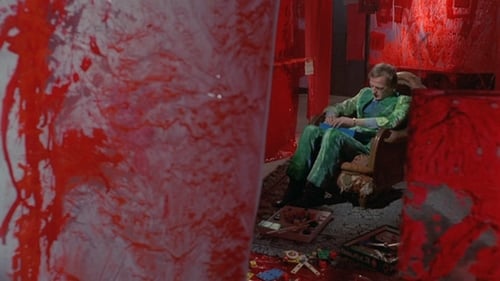
A surreal and disturbing distillation of Western Civilization, Necropolis is the unhinged vision of Italian director Franco Brocani. Pierre Clémenti is Attila the Hun, naked and on horseback, while Warhol superstar Viva is a drunken and abusive Countess Bathory. A pop pastiche for the psychedelic generation, Necropolis features a soundtrack by Gavin Bryars.

Writer
Spectacular Italian comedy-drama directed by Carmelo Bene. The narrative follows how Don Giovanni tries to seduce a young woman who is manically searching for Christian icons. The film is loosely based on Jules Barbey d'Aurevilly's short story "The Greatest Love of Don Juan", from the collection Les Diaboliques. The film premiered in the Directors' Fortnight section of the Cannes Film Festival.

Producer
Spectacular Italian comedy-drama directed by Carmelo Bene. The narrative follows how Don Giovanni tries to seduce a young woman who is manically searching for Christian icons. The film is loosely based on Jules Barbey d'Aurevilly's short story "The Greatest Love of Don Juan", from the collection Les Diaboliques. The film premiered in the Directors' Fortnight section of the Cannes Film Festival.

Don Giovanni
Spectacular Italian comedy-drama directed by Carmelo Bene. The narrative follows how Don Giovanni tries to seduce a young woman who is manically searching for Christian icons. The film is loosely based on Jules Barbey d'Aurevilly's short story "The Greatest Love of Don Juan", from the collection Les Diaboliques. The film premiered in the Directors' Fortnight section of the Cannes Film Festival.

Director
Spectacular Italian comedy-drama directed by Carmelo Bene. The narrative follows how Don Giovanni tries to seduce a young woman who is manically searching for Christian icons. The film is loosely based on Jules Barbey d'Aurevilly's short story "The Greatest Love of Don Juan", from the collection Les Diaboliques. The film premiered in the Directors' Fortnight section of the Cannes Film Festival.
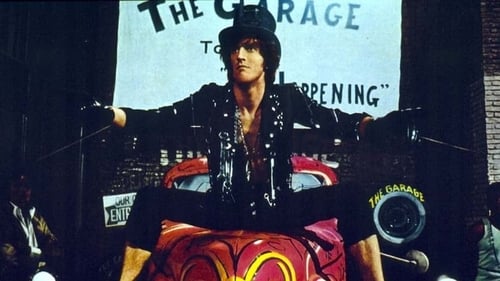
Billy Desco
Frank was removed from an investigation into Mac Brown, the owner of a pharmaceutical company, who was suspected of drug trafficking and illegal experiments on teenagers. When Brown is murdered, Frank is called to investigate...

Producer
After a fight in their apartment, the story of a writer and a painter are divided. The writer is dedicated with his partner Manon to provoke continuous accidents in a field in which car carcasses abound. The painter is recruited to kill, through a poisoned picture, the old Arden to allow the latter's wife, Alice to live with her lover Mosbie.

Writer
After a fight in their apartment, the story of a writer and a painter are divided. The writer is dedicated with his partner Manon to provoke continuous accidents in a field in which car carcasses abound. The painter is recruited to kill, through a poisoned picture, the old Arden to allow the latter's wife, Alice to live with her lover Mosbie.

Poet
After a fight in their apartment, the story of a writer and a painter are divided. The writer is dedicated with his partner Manon to provoke continuous accidents in a field in which car carcasses abound. The painter is recruited to kill, through a poisoned picture, the old Arden to allow the latter's wife, Alice to live with her lover Mosbie.

Director
After a fight in their apartment, the story of a writer and a painter are divided. The writer is dedicated with his partner Manon to provoke continuous accidents in a field in which car carcasses abound. The painter is recruited to kill, through a poisoned picture, the old Arden to allow the latter's wife, Alice to live with her lover Mosbie.

Self
Artists and poets meet in a dreamlike space between walks and performances.

Costume Design
A man (Carmelo Bene) can not bear to be part of society. He considers himself a "jerk" and so invents its own philosophy, which involves the destruction of his land of Puglia where all citizens are devoted to the Catholic religion. However, the man can not destroy the belief of the pilgrims of Salento, because a woman would prevent that. It is an unknown "Santa Margherita", which tries to divert man from his weird and impossible philosophy. Successive scenes of the film show various situations unreal and dream in which the two protagonists try to obtain the best one on the other. After a blasphemous dialogue between monks, the man includes his whole philosophy in a Moorish building. In fact, this seems to have been the scene of the massacre of the famous 800 Martyrs of Otranto, which are considered by the scetic man the absolute death of Christianity.

Production Design
A man (Carmelo Bene) can not bear to be part of society. He considers himself a "jerk" and so invents its own philosophy, which involves the destruction of his land of Puglia where all citizens are devoted to the Catholic religion. However, the man can not destroy the belief of the pilgrims of Salento, because a woman would prevent that. It is an unknown "Santa Margherita", which tries to divert man from his weird and impossible philosophy. Successive scenes of the film show various situations unreal and dream in which the two protagonists try to obtain the best one on the other. After a blasphemous dialogue between monks, the man includes his whole philosophy in a Moorish building. In fact, this seems to have been the scene of the massacre of the famous 800 Martyrs of Otranto, which are considered by the scetic man the absolute death of Christianity.

Producer
A man (Carmelo Bene) can not bear to be part of society. He considers himself a "jerk" and so invents its own philosophy, which involves the destruction of his land of Puglia where all citizens are devoted to the Catholic religion. However, the man can not destroy the belief of the pilgrims of Salento, because a woman would prevent that. It is an unknown "Santa Margherita", which tries to divert man from his weird and impossible philosophy. Successive scenes of the film show various situations unreal and dream in which the two protagonists try to obtain the best one on the other. After a blasphemous dialogue between monks, the man includes his whole philosophy in a Moorish building. In fact, this seems to have been the scene of the massacre of the famous 800 Martyrs of Otranto, which are considered by the scetic man the absolute death of Christianity.

Writer
A man (Carmelo Bene) can not bear to be part of society. He considers himself a "jerk" and so invents its own philosophy, which involves the destruction of his land of Puglia where all citizens are devoted to the Catholic religion. However, the man can not destroy the belief of the pilgrims of Salento, because a woman would prevent that. It is an unknown "Santa Margherita", which tries to divert man from his weird and impossible philosophy. Successive scenes of the film show various situations unreal and dream in which the two protagonists try to obtain the best one on the other. After a blasphemous dialogue between monks, the man includes his whole philosophy in a Moorish building. In fact, this seems to have been the scene of the massacre of the famous 800 Martyrs of Otranto, which are considered by the scetic man the absolute death of Christianity.

Novel
A man (Carmelo Bene) can not bear to be part of society. He considers himself a "jerk" and so invents its own philosophy, which involves the destruction of his land of Puglia where all citizens are devoted to the Catholic religion. However, the man can not destroy the belief of the pilgrims of Salento, because a woman would prevent that. It is an unknown "Santa Margherita", which tries to divert man from his weird and impossible philosophy. Successive scenes of the film show various situations unreal and dream in which the two protagonists try to obtain the best one on the other. After a blasphemous dialogue between monks, the man includes his whole philosophy in a Moorish building. In fact, this seems to have been the scene of the massacre of the famous 800 Martyrs of Otranto, which are considered by the scetic man the absolute death of Christianity.

The Protagonist
A man (Carmelo Bene) can not bear to be part of society. He considers himself a "jerk" and so invents its own philosophy, which involves the destruction of his land of Puglia where all citizens are devoted to the Catholic religion. However, the man can not destroy the belief of the pilgrims of Salento, because a woman would prevent that. It is an unknown "Santa Margherita", which tries to divert man from his weird and impossible philosophy. Successive scenes of the film show various situations unreal and dream in which the two protagonists try to obtain the best one on the other. After a blasphemous dialogue between monks, the man includes his whole philosophy in a Moorish building. In fact, this seems to have been the scene of the massacre of the famous 800 Martyrs of Otranto, which are considered by the scetic man the absolute death of Christianity.

Director
A man (Carmelo Bene) can not bear to be part of society. He considers himself a "jerk" and so invents its own philosophy, which involves the destruction of his land of Puglia where all citizens are devoted to the Catholic religion. However, the man can not destroy the belief of the pilgrims of Salento, because a woman would prevent that. It is an unknown "Santa Margherita", which tries to divert man from his weird and impossible philosophy. Successive scenes of the film show various situations unreal and dream in which the two protagonists try to obtain the best one on the other. After a blasphemous dialogue between monks, the man includes his whole philosophy in a Moorish building. In fact, this seems to have been the scene of the massacre of the famous 800 Martyrs of Otranto, which are considered by the scetic man the absolute death of Christianity.

Novel
Hermitage, defined by Bene as "a rehearsal for lenses", beyond any literal rendition - its narrative trace comes from one of his anti-novels, Credito Italiano V.E.R.D.I - displays his immediate attitude to thinking a cinematic language completely based on actor's movements and actions, and more specifically, on his presence and his schemes. Camouflaged or naked, still or moving, his body seems to play and be played at the same time, shifted by objective and subjective tensions, both metaphorically and visually speaking.

Writer
Hermitage, defined by Bene as "a rehearsal for lenses", beyond any literal rendition - its narrative trace comes from one of his anti-novels, Credito Italiano V.E.R.D.I - displays his immediate attitude to thinking a cinematic language completely based on actor's movements and actions, and more specifically, on his presence and his schemes. Camouflaged or naked, still or moving, his body seems to play and be played at the same time, shifted by objective and subjective tensions, both metaphorically and visually speaking.

The Man
Hermitage, defined by Bene as "a rehearsal for lenses", beyond any literal rendition - its narrative trace comes from one of his anti-novels, Credito Italiano V.E.R.D.I - displays his immediate attitude to thinking a cinematic language completely based on actor's movements and actions, and more specifically, on his presence and his schemes. Camouflaged or naked, still or moving, his body seems to play and be played at the same time, shifted by objective and subjective tensions, both metaphorically and visually speaking.

Director
Hermitage, defined by Bene as "a rehearsal for lenses", beyond any literal rendition - its narrative trace comes from one of his anti-novels, Credito Italiano V.E.R.D.I - displays his immediate attitude to thinking a cinematic language completely based on actor's movements and actions, and more specifically, on his presence and his schemes. Camouflaged or naked, still or moving, his body seems to play and be played at the same time, shifted by objective and subjective tensions, both metaphorically and visually speaking.

Prete
Bob is a successful actor, but his career gets doomed by a strange phenomenon: the animal kingdom is taking on him!
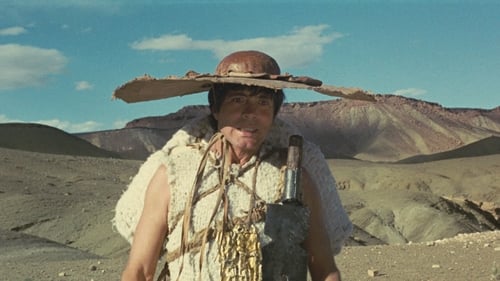
Creonte
In pre-war Italy, a young couple have a baby boy. The father, however, is jealous of his son - and the scene moves to antiquity, where the baby is taken into the desert to be killed. He is rescued, given the name Edipo (Oedipus), and brought up by the King and Queen of Corinth as their son. One day an oracle informs Edipo that he is destined to kill his father and marry his mother. Horrified, he flees Corinth and his supposed parents - only to get into a fight and kill an older man on the road...

In 1966, Bene presented The Pink and the Black, his successful theatrical adaptation of Matthew Gregory Lewis’ lurid Gothic novel from 1796. Experimental filmmaker Paolo Brunatto filmed some of the play’s rehearsals in a Rome apartment (also frequented also by the Living Theatre). Bene's artistry is encapsulated in one sentence: “One cannot continue to prostitute the idea of theatre, which stands only for a magical, brutal link with reality."

Himself
Backstage short documentary on Carmelo Bene’s theatre works Amleto and Pinocchio.










